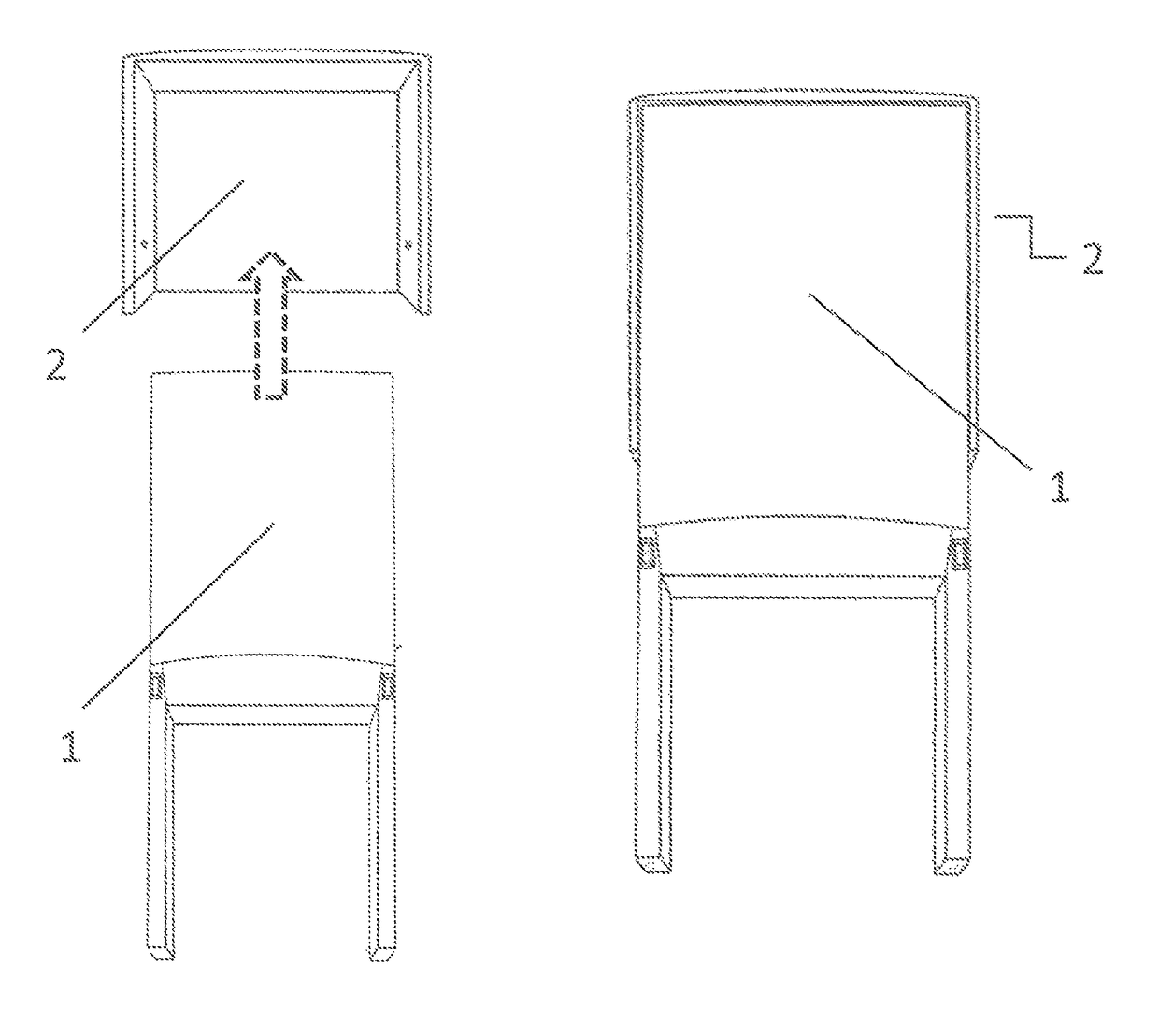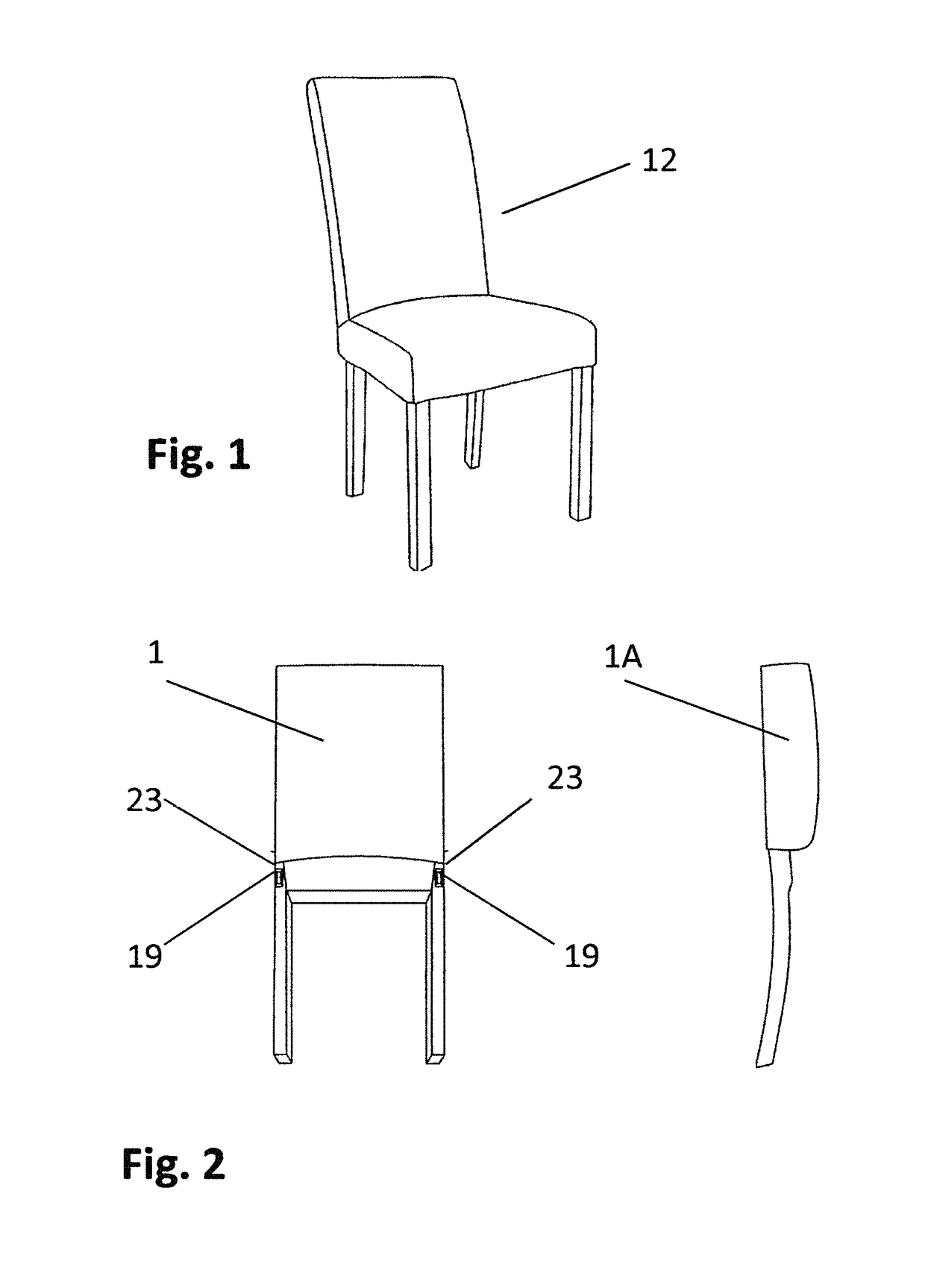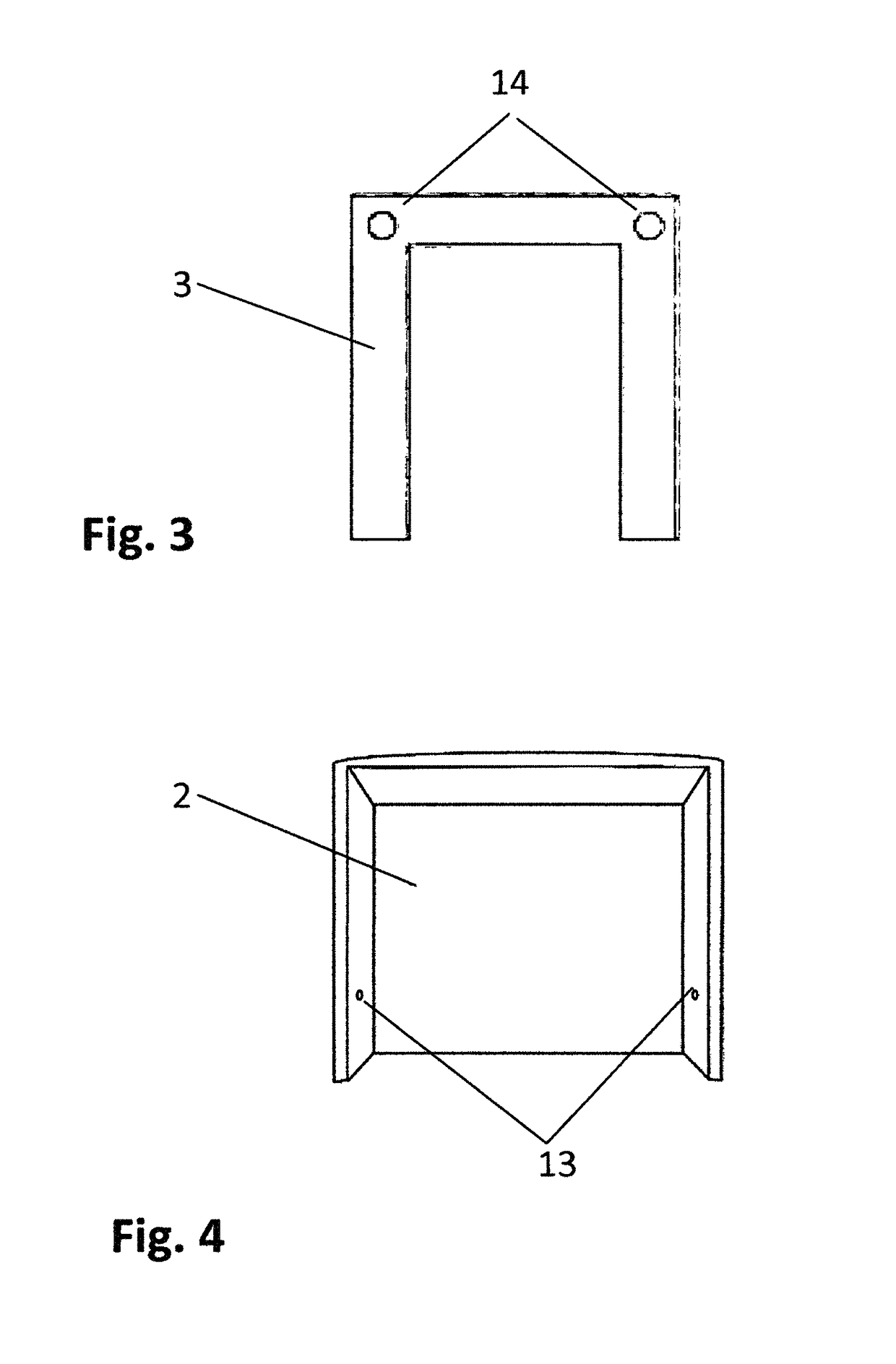KD chair and stool construction
a technology for chairs and stools, applied in the field of furniture, can solve the problems of severing the limits of how sophisticated products can be designed, time spent assembling and the difficulty of assembling units, and reducing the cubic measure of chairs, so as to reduce transportation, warehouse storage, handling and inventory costs, and simplify the effect of assembly
- Summary
- Abstract
- Description
- Claims
- Application Information
AI Technical Summary
Benefits of technology
Problems solved by technology
Method used
Image
Examples
Embodiment Construction
[0038]FIG. 1 shows the final assembled preferred embodiment of a ready-to-assemble chair 12 of the present invention. The chair is composed of three (3) sub-assemblies: the factory assembled back sub-assembly, FIG. 2, (1, 1A); the factory assembled front leg sub-assembly, FIG. 3, (3); and the factory assembled seat box sub-assembly, FIG. 4, (2). The preassembled back assembly 1 consists of a determined number of structural and / or ornamental cross rails (e.g., 18), a mortise 19 on the interior of each leg of the assembly with a knurled nut 23 inserted within the mortise 19 to receive the threaded end 22 of the metal attaching rod 7. The front leg sub-assembly consists of the two front legs and a top cross rail existing on the same plane and assembled in a horseshoe shape. The left and right top corners have a hole 14 bored through, through which the attaching rod 7 is to be fed to attach the back leg sub-assembly to the front leg sub-assembly. Washer 10 and hex socket T-nut 8 will be...
PUM
 Login to View More
Login to View More Abstract
Description
Claims
Application Information
 Login to View More
Login to View More - R&D
- Intellectual Property
- Life Sciences
- Materials
- Tech Scout
- Unparalleled Data Quality
- Higher Quality Content
- 60% Fewer Hallucinations
Browse by: Latest US Patents, China's latest patents, Technical Efficacy Thesaurus, Application Domain, Technology Topic, Popular Technical Reports.
© 2025 PatSnap. All rights reserved.Legal|Privacy policy|Modern Slavery Act Transparency Statement|Sitemap|About US| Contact US: help@patsnap.com



